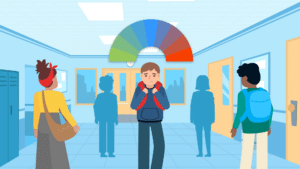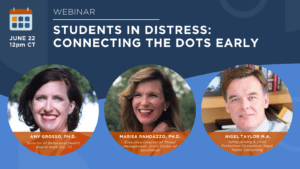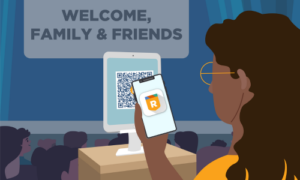Listen to this blog
6 minutes
Recognizing and addressing low-level concerns at the individual level is critical to ensuring students’ physical and emotional safety — and digital platforms like Raptor’s StudentSafe can facilitate the reporting and communication of such concerns.
In this Raptor webinar, three student safety experts explain how technology can help connect the dots between low-level concerns to identify students in distress and intervene early:
- Amy Grosso, PhD is the Director of Behavioral Health for Round Rock ISD and oversees students in crisis or at-risk
- Marisa Randazzo, PhD is the Executive Director of Threat Assessment for Ontic and the Director of Threat Assessment for Georgetown University
- Nigel Taylor is a Safeguarding expert and consultant with 30 years of experience as a Head of independent schools in the United Kingdom and abroad
Click here to watch the full webinar.
Reporting of Low-Level Concerns: Then and Now
Dr. Grosso shared that teachers and other school staff are often the first to notice signs of emotional distress in students. For many years, staff jotted down concerns about students on sticky notes, or filed this information away in locked cabinets.
However, this information was often lost or not communicated to people who could intervene. While multiple staff members may have noticed concerns about the same student, these concerns were rarely brought together to create a holistic picture of the student’s situation. Many people had information yet this information could not be readily utilized to guide intervention.
For example, David Rogers, Chief Marketing Officer of Raptor Technologies, shared a story of an eight-year-old child in Oregon, who was progressively starved to death by his parents. Multiple staff members had documented concerns about the student, but because this information was locked away, it could not be used to prevent a tragedy.
Unfortunately, information about low-level concerns is often not communicated until a student has already become a threat to themselves or others. Dr. Randazzo noted that low-level concerns are often noted by multiple school staff members prior to events of mass violence, but that teachers had no avenue to report such concerns. “Time and time again, a lot of different people had a different piece of the puzzle beforehand, but… didn’t know where to bring it [or] what to do with it,” said Dr. Randazzo.
As Dr. Grosso said, “We have passed the time in our society where we can’t keep [concerns] on sticky notes [or] in folders.” Rogers said this is where technology can really shine. By collecting student concerns in one streamlined database, Raptor’s StudentSafe software can help school mental health professionals and behavioral assessment teams identify, document, and manage student well-being in one connected system.
Nigel Taylor says that similar “safeguarding” software has been used in the U.K. for many years now. According to Taylor, teachers appreciate the opportunity to have a direct impact on students’ lives by sharing the information they have already been collecting. “When people start acknowledging that there are mental health problems, then you’ve got a chance of doing something about them,” said Taylor.
Early Intervention: Supporting Students in Distress Before a Crisis Occurs
Another place where technology can shine is by guiding early intervention efforts. Dr. Grosso described early intervention as a proactive, versus reactive, response to student distress. Low-level concerns can help direct early intervention efforts, allowing school mental health professionals to act before they become more serious. “We do not need a student to be in crisis before we provide support,” said Dr. Grosso.
Digital reporting of low-level concerns can help connect students with resources to support their emotional well-being. “When we hear about things earlier on and have a way to quickly see the different reports and concerns that are coming in from different people… we’ve got more latitude about the different support resources we can use… within the school [and] within the community,” said Dr. Randazzo.
Through early intervention, schools can often reach students before they require professional help. “If you get to them earlier, you don’t need to be looking outside for external support,” said Taylor. This is especially important given the scarcity of mental healthcare providers who specialize in the treatment of children. Early intervention in schools can help combat the current child mental health crisis by reducing the need for community mental health support.
Early intervention can also help prevent low-level concerns from escalating into acts of mass violence. Dr. Randazzo has found in her research that the perpetrators of school violence have often been struggling with personal problems for a long time and may even have reached a place of desperation where they no longer want to live anymore.
Both school mental health professionals and behavioral threat assessment teams rely on reports from teachers to prevent students from reaching this desperate state. According to Dr. Randazzo, software like Raptor StudentSafe can serve as an “information repository” for these experts, guiding early intervention and violence prevention efforts. Click here to schedule a personalized demo.
Related Resources
Guide to K-12 Student Wellbeing
Strategies to Recognize, Document, and Support Students in Distress.
Learn More
Listen to this blog
6 minutes








